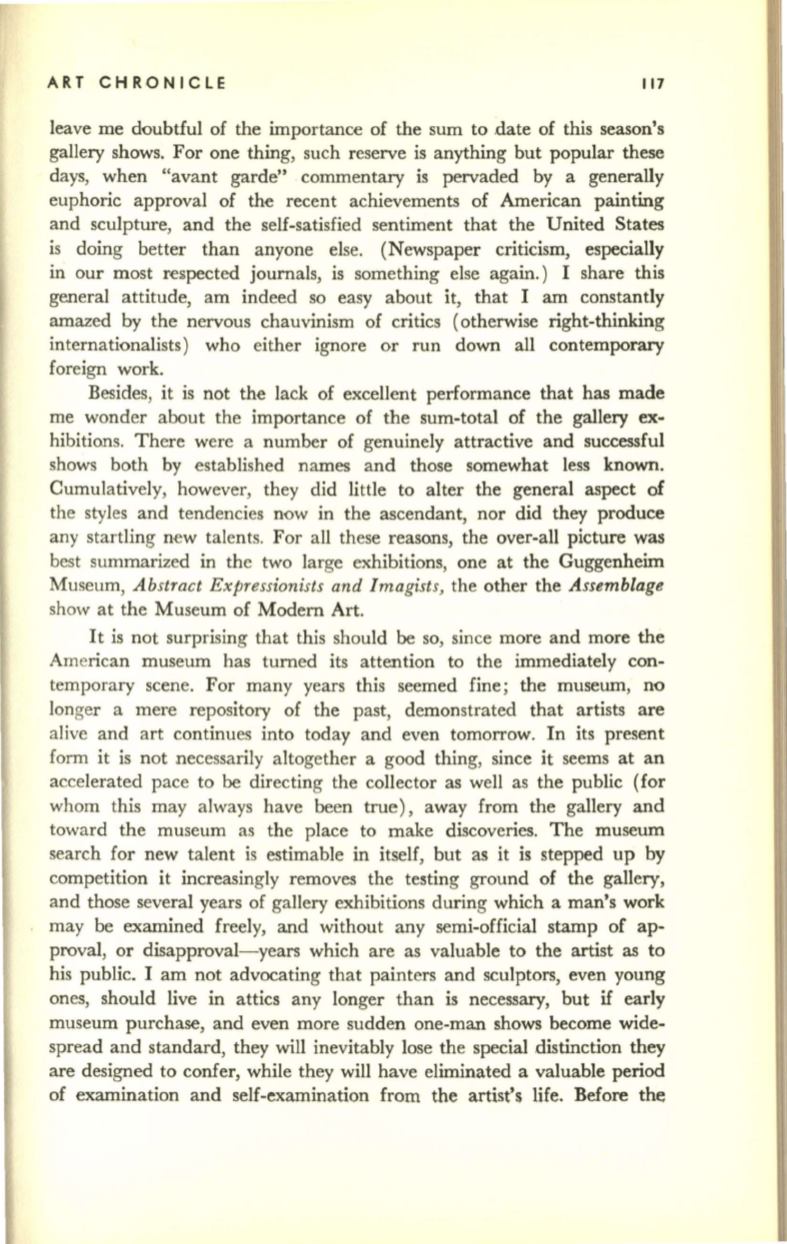
ART CHRONICLE
117
leave me doubtful of the importance of the sum to date of this season's
gallery shows. For one thing, such reserve is anything but popular these
days, when "avant garde" commentary is pervaded by a generally
euphoric approval of the recent achievements of American painting
and sculpture, and the self-satisfied sentiment that the United States
is doing better than anyone else. (Newspaper criticism, especially
in our most respected journals, is something else again.) I share this
general attitude, am indeed so easy about it, that I am constantly
amazed by the nervous chauvinism of critics (otherwise right-thinking
internationalists) who either ignore or run down all contemporary
foreign work.
Besides, it is not the lack of excellent performance that has made
me wonder about the importance of the sum-total of the gallery ex–
hibitions. There were a number of genuinely attractive and successful
shows both by established names and those somewhat less known.
Cumulatively, however, they did little to alter the general aspect of
the styles and tendencies now in the ascendant, nor did they produce
any startling new talents. For all these reasons, the over-all picture was
best summarized in the two large exhibitions, one at the Guggenheim
Museum,
Abstract Expressionists and Imagists,
the other the
Assemblage
show at the Museum of Modern Art.
It
is not surprising that this should
be
so, since more and more the
American museum has turned its attention to the immediately con–
temporary scene. For many years this seemed fine; the museum, no
longer a mere repository of the past, demonstrated that artists are
alive and art continues into today and even tomorrow. In its present
form it is not necessarily altogether a good thing, since it seems at an
accelerated pace to
be
directing the collector as well as the public (for
whom this may always have been true), away from the gallery and
toward the museum as the place to make discoveries. The museum
search for new talent is estimable in itself, but as it is stepped up by
competition it increasingly removes the testing ground of the gallery,
and those several years of gallery exhibitions during which a man's work
may be examined freely, and without any semi-official stamp of ap–
proval, or disapproval-years which are as valuable to the artist as to
his public. I am not advocating that painters and sculptors, even young
ones, should live in attics any longer than
is
necessary, but
if
early
museum purchase, and even more sudden one-man shows become wide–
spread and standard, they will inevitably lose the special distinction they
are designed to confer, while they will have eliminated a valuable period
of examination and self-examination from the artist's life. Before the


